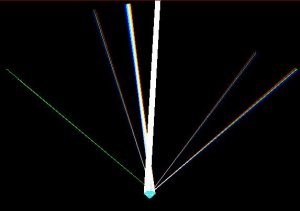- Joined
- Jan 7, 2009
- Messages
- 10,450
I think I've got a good handle on how to frame my point.
We know how to judge which cut is most brilliant- and cutters know how to strive for that.
And we know how to interpret ASET to help define the stones that are cut for maximum light performance.
How about stones cut for maximum spread?
Just like the maximum light performance stones, stones cut for maximum spread can achieve balance- or not.
When they don't they can be really bad.
When stones cut for spread do achieve the correct balance, there's tremendous scintillation to make up for the lack of fire in my opinion.
Using the ASET chart allows us to select stones for light performance works.
What tools have we to offer for consumers who are looking for stones optimized for size and scintillation as opposed to light performance?
I don't have the answer at this moment, but I think it's part of where I see a problem the way ASET is currently interpreted- and consequently how leakage is discussed.
We know how to judge which cut is most brilliant- and cutters know how to strive for that.
And we know how to interpret ASET to help define the stones that are cut for maximum light performance.
How about stones cut for maximum spread?
Just like the maximum light performance stones, stones cut for maximum spread can achieve balance- or not.
When they don't they can be really bad.
When stones cut for spread do achieve the correct balance, there's tremendous scintillation to make up for the lack of fire in my opinion.
Using the ASET chart allows us to select stones for light performance works.
What tools have we to offer for consumers who are looking for stones optimized for size and scintillation as opposed to light performance?
I don't have the answer at this moment, but I think it's part of where I see a problem the way ASET is currently interpreted- and consequently how leakage is discussed.




300x240.png)